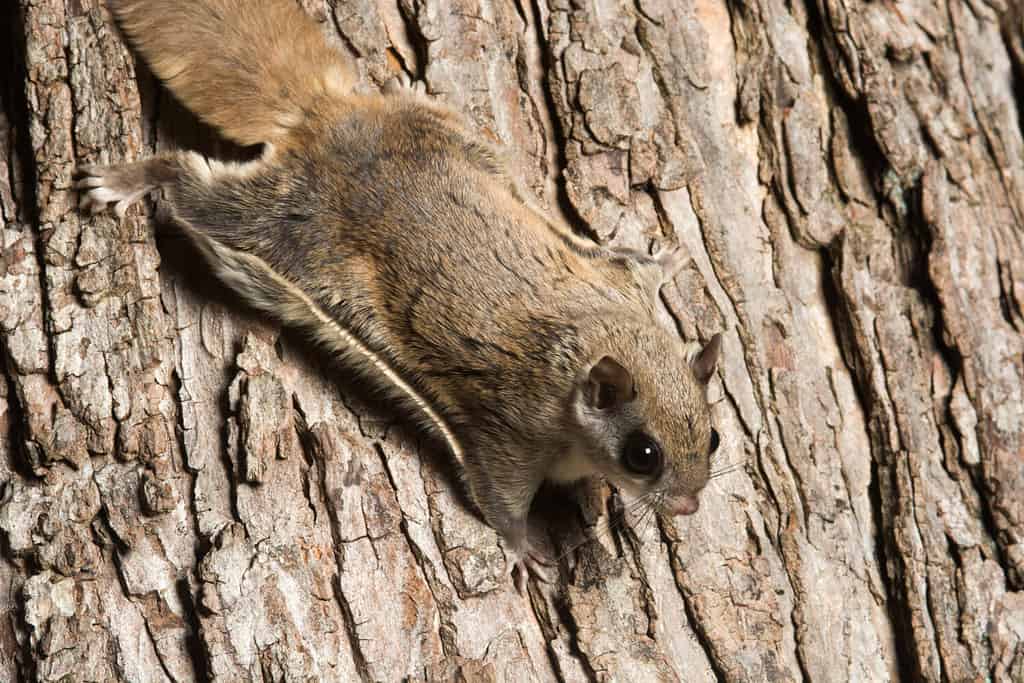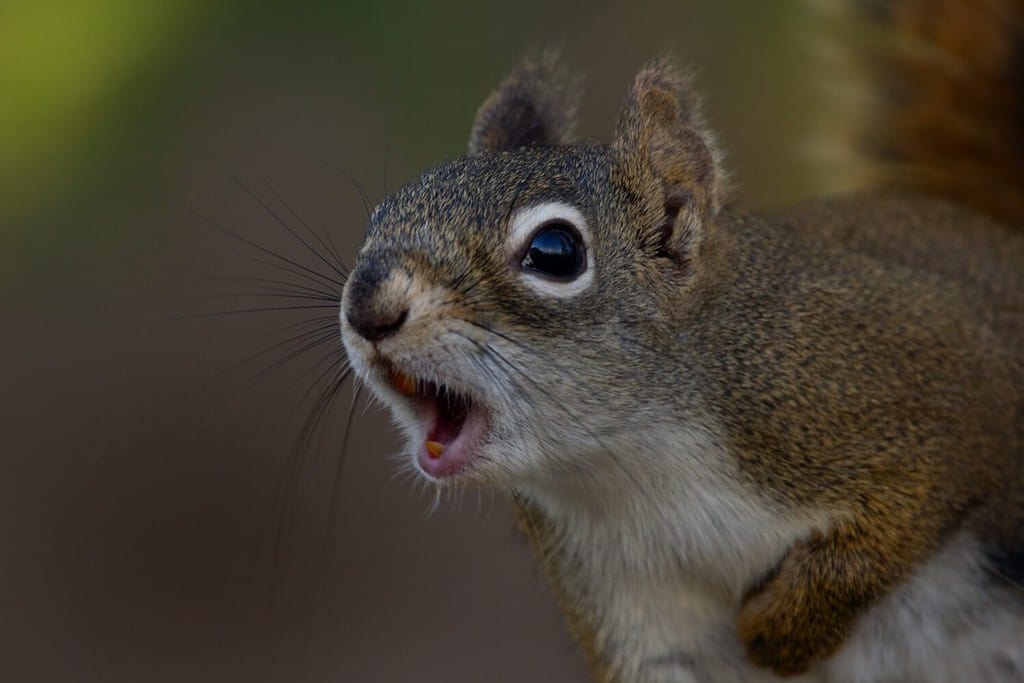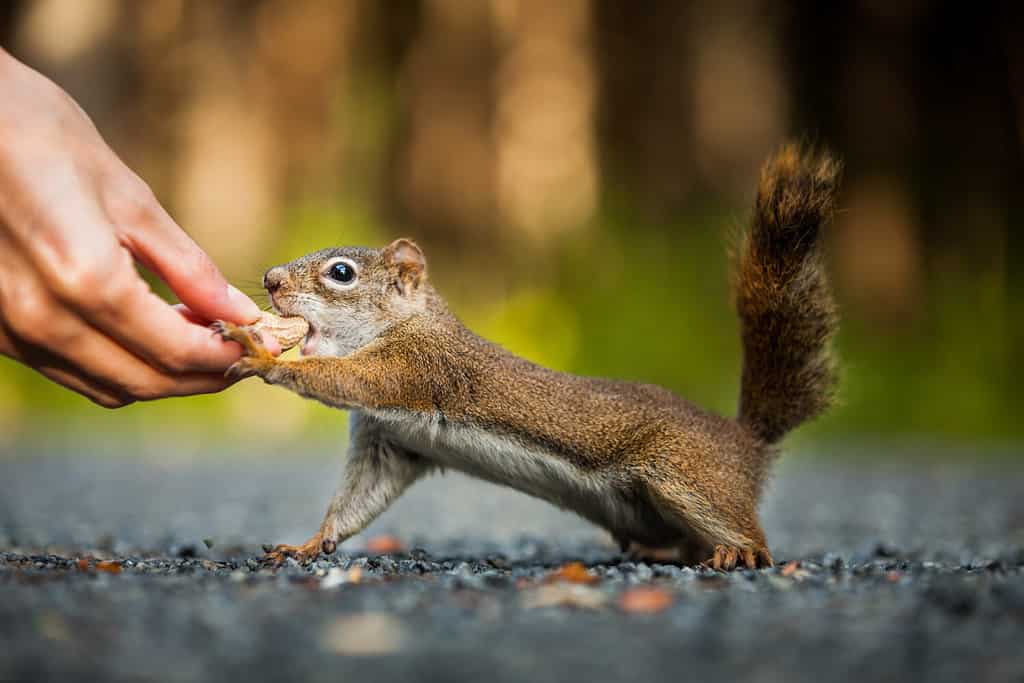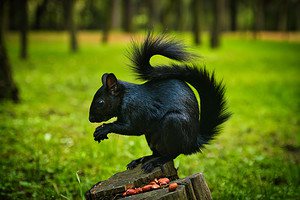Have you ever found a squirrel sprawled out on the ground and wondered what it was doing? Perhaps you thought it was ill and that you should help? This is called splooting and is a common behavior.
Squirrels sprawl out and sploot when they need to cool down. They get as much of their body as possible in contact with a cool surface which removes heat from their blood vessels. They also sprawl out when they are sunbathing, having a rest, or hiding from predators.
However, there are lots of other potential reasons. Read on to find out 12 reasons why squirrels sploot.
1. Trying to Cool Down
A squirrel’s belly is often a bit less furry than their back. By pressing their underside against a cool surface, they can lose heat from blood vessels close to their skin and make themselves feel more comfortable. The more of their body that is touching the cool surface, the better. Hence the flattened sploot posture with all four limbs out to the side. This is why you are more likely to see splooting squirrels during a heatwave. People often come across them on sidewalks and in yards.
2. Soaking up the Sun
When the weather is cooler, squirrels sploot to do the opposite of losing heat. They can be seen lying with their belly on the ground and their head lifted in a sunbathing posture. They do this to make the most of the warmth of the sun by presenting their darker heat-absorbing side to the warmth. Squirrels can even shiver when they are very cold!
3. Having a Rest
Squirrels rest in trees where they are safer from predators. However, this is not without risks. A wide-awake squirrel is highly unlikely to fall out of the tree. A sleeping spiral, on the other hand, could do so. Squirrels sprawl out and press their body flat against the branch, they reduce the chances of them falling out of the tree whilst they are taking a nap. The greater the surface area in contact with the branch, the greater the friction, and the safer they are.
4. Evading Predators Through Camouflage

Some squirrels are well camouflaged against bark.
©Tony Campbell/Shutterstock.com
Squirrels have several predators including bobcats and coyotes. In urban environments, they have to be on the lookout for pet dogs – many of whom have a habit of chasing and potentially killing squirrels. Whilst they have both claws and teeth to defend themselves, these are not much use against much larger animals like bobcats. Part of the squirrel’s defense is camouflage. If they can stay very still and do not get spotted by a predator, they are going to be much safer. When they lie flat against the tree branch, it makes them more likely to blend in. The darker-colored fur on their backs matches tree bark more closely than the lighter fur on their belly.
5. Catching Their Breath After Running
Squirrels are very active creatures and spend a lot of their time running around. However, even squirrels need to break sometimes. The squirrel that you have found lying flat on the ground may simply be taking a break from finding food or from chasing each other around. Once they have rested, they will get up and start all over again.
6. Nursing Baby Squirrels
Squirrels need to be aware of predators at all times and that includes when they are nursing their babies. Some mother squirrels adopt a flat posture when nursing their young because they are better camouflaged from potential enemies. Also, the young are protected by the mother’s body.
7. Marking Their Territory

Male squirrels mark their territory.
©Saeedatun/Shutterstock.com
Squirrels are territorial animals who mark their territory using scent glands on their throats. Male squirrels mark their territory to deter rivals during the mating season. When he does this, he may lie down and rub the underside of his neck along the ground or on a tree to mark his territory.
8. Mating Positioning

Female squirrels may sprawl out in preparation for mating.
©iStock.com/BetsyMoseley
Females may adopt a sploot-like position when she is ready to mate. The male may sniff and lick her belly before mating takes place. If the female squirrel sprawls out, she may be indicating that she is willing to accept this particular male as her mate.
9. Hiding From the Rain
Squirrels don’t particularly like being out in the pouring rain. If it is raining or snowing heavily, they may need to flatten their bodies to sneak underneath a shelter where they can stay dry until the rain stops.
10. Self-defense Against Attackers
If a squirrel is attacked by a predator, they are more likely to survive the attack by presenting their back rather than their belly. More of their vital organs are located at the front of their body and so this is the area that they need to protect. By pressing their body flat against a branch, they reduce the chances of a fatal injury and increase their chances of survival.
11. A Pet Squirrel Being Unhappy

Some squirrels are tame but they generally don’t make great pets.
©Benoit Daoust/Shutterstock.com
Generally, squirrels do not make great pets. It is not legal in all areas to keep a squirrel as a pet and they have very specific care requirements. Some people end up caring for a wild squirrel that has been injured. The aim should always be to release it back into the wild if at all possible. If you are looking after a squirrel that seems to be splooting more than normal, it could be an indication that it is not happy with its accommodation or its diet. This is something that you should speak to a wildlife expert about.
12. Injury or Disease
Sometimes, squirrels do get injured either by human activities such as road traffic accidents or by predators. They can also suffer from diseases and infections that make them feel sick. There is a chance that the screw you have come across in the split position is ill or injured. If you approach it and it is not able to get back on its feet and move away this indicates that there is a potential problem.
Where Do Squirrels Sprawl Out?
You normally find a splooting on the ground in shady areas where the surface is cool. People often come across them on sidewalks or in yards. But they have also been seen doing this in trees or even on roofs and railings.
Should You Help a Sprawled Squirrel?
Most of the time, no you do not need to help a sprawled squirrel. They are simply acting naturally and will get back to running around as soon as they are ready. If you approach them or try to pick them up, you will just cause them stress and risk getting scratched or bitten yourself. If you are concerned, observe the squirrel for a while to see if they have any other signs that they are sick or injured. Contact your local wildlife rescue center for appropriate advice.
What Other Animals Sprawl Out?
Several other animals sploot – often to cool themselves down. The pose will be familiar to dog owners who often do it on cool, tiled floors. Also, bears and rabbits do it for the same reason. The yellow-bellied marmot, which is a type of ground squirrel does the same thing.
| Number | Reason Why Squirrels Sprawl Out |
|---|---|
| 1 | Trying to cool down |
| 2 | Soaking up the sun |
| 3 | Having a rest |
| 4 | Evading predators through camouflage |
| 5 | Catching their breath after running |
| 6 | Nursing baby squirrels |
| 7 | Marking their territory |
| 8 | Mating positioning |
| 9 | Hiding from the rain |
| 10 | Self-defense against attackers |
| 11 | A pet squirrel being unhappy |
| 12 | Injury or disease |
The photo featured at the top of this post is © MMCRP/Shutterstock.com
Thank you for reading! Have some feedback for us? Contact the AZ Animals editorial team.







